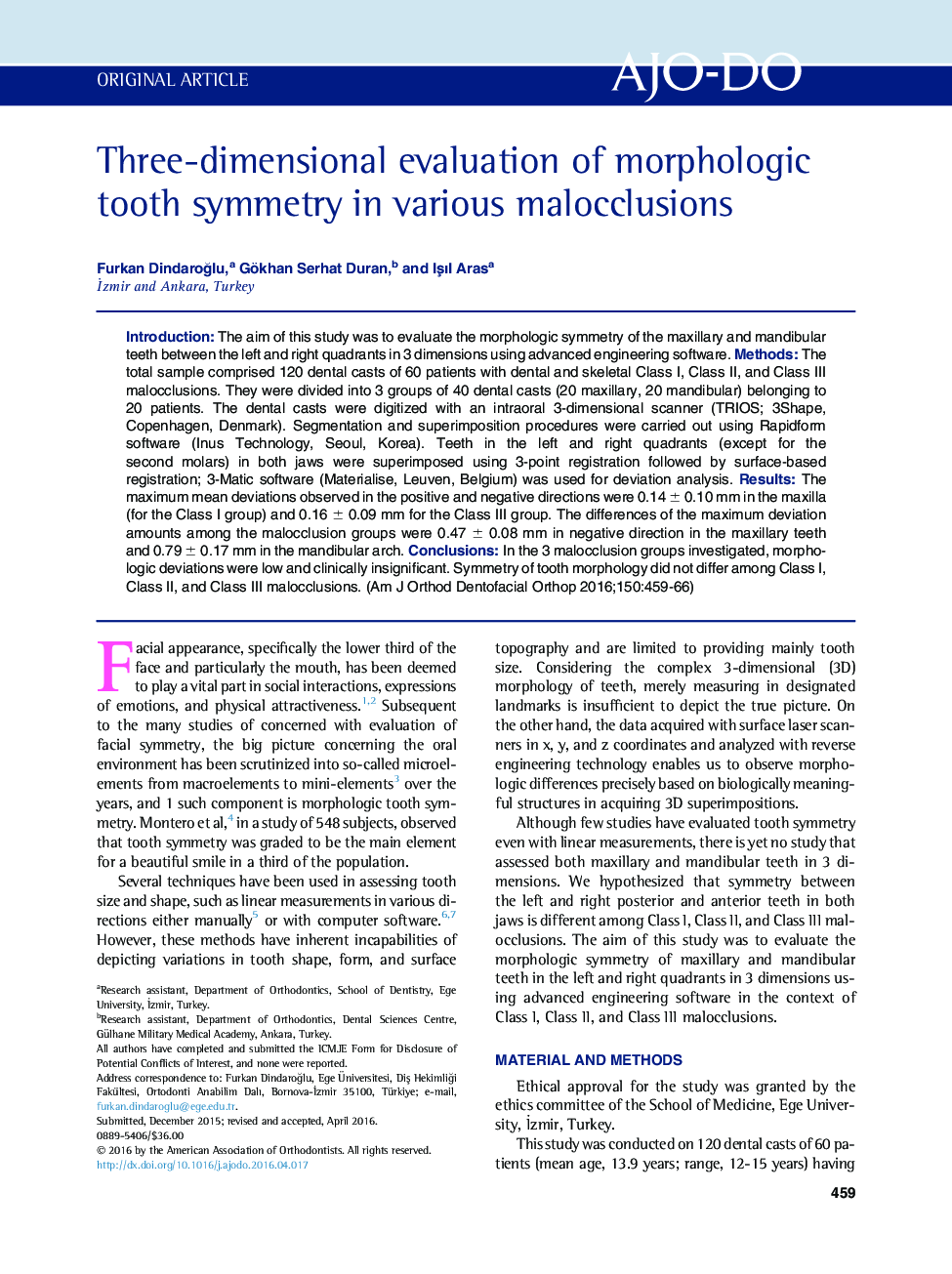| Article ID | Journal | Published Year | Pages | File Type |
|---|---|---|---|---|
| 3115227 | American Journal of Orthodontics and Dentofacial Orthopedics | 2016 | 8 Pages |
•An evaluation of dental symmetry was carried out in various malocclusions.•A total of 120 maxillary and mandibular dental casts were digitized.•Mean positive and negative deviations between the left and right teeth were analyzed.•Dental symmetry does not differ among malocclusions.
IntroductionThe aim of this study was to evaluate the morphologic symmetry of the maxillary and mandibular teeth between the left and right quadrants in 3 dimensions using advanced engineering software.MethodsThe total sample comprised 120 dental casts of 60 patients with dental and skeletal Class I, Class II, and Class III malocclusions. They were divided into 3 groups of 40 dental casts (20 maxillary, 20 mandibular) belonging to 20 patients. The dental casts were digitized with an intraoral 3-dimensional scanner (TRIOS; 3Shape, Copenhagen, Denmark). Segmentation and superimposition procedures were carried out using Rapidform software (Inus Technology, Seoul, Korea). Teeth in the left and right quadrants (except for the second molars) in both jaws were superimposed using 3-point registration followed by surface-based registration; 3-Matic software (Materialise, Leuven, Belgium) was used for deviation analysis.ResultsThe maximum mean deviations observed in the positive and negative directions were 0.14 ± 0.10 mm in the maxilla (for the Class I group) and 0.16 ± 0.09 mm for the Class III group. The differences of the maximum deviation amounts among the malocclusion groups were 0.47 ± 0.08 mm in negative direction in the maxillary teeth and 0.79 ± 0.17 mm in the mandibular arch.ConclusionsIn the 3 malocclusion groups investigated, morphologic deviations were low and clinically insignificant. Symmetry of tooth morphology did not differ among Class I, Class II, and Class III malocclusions.
